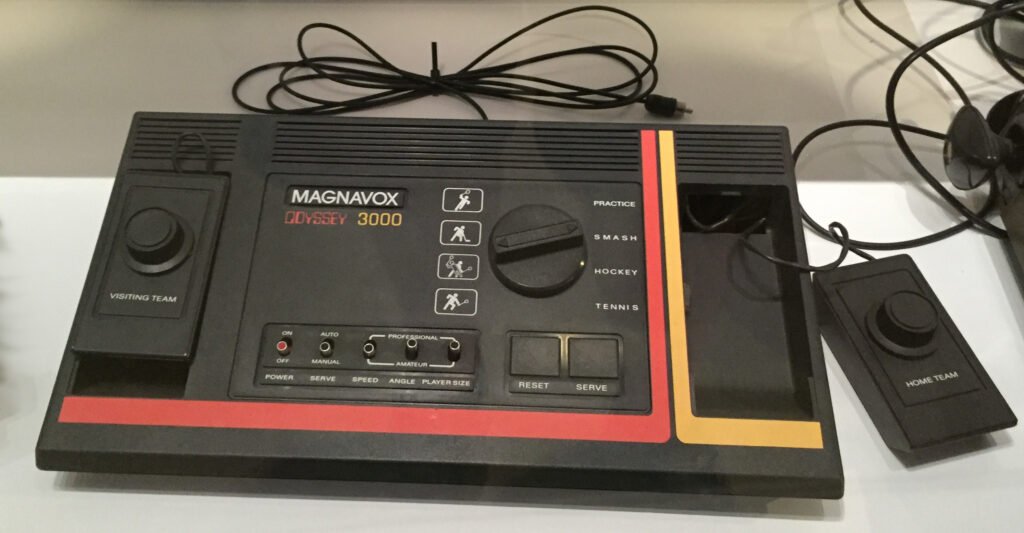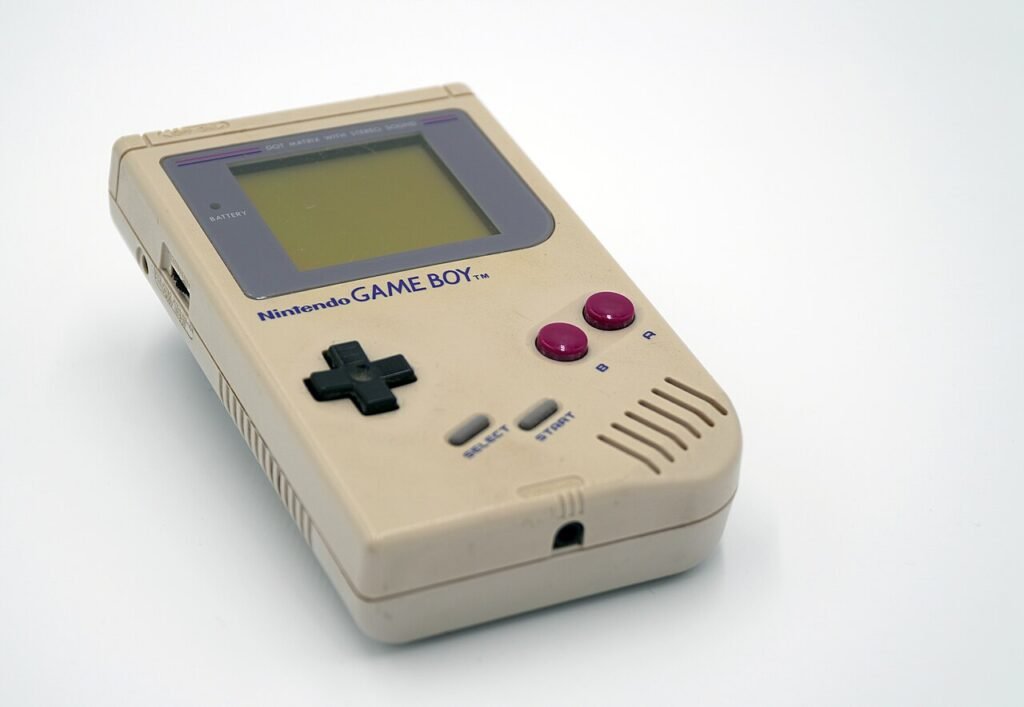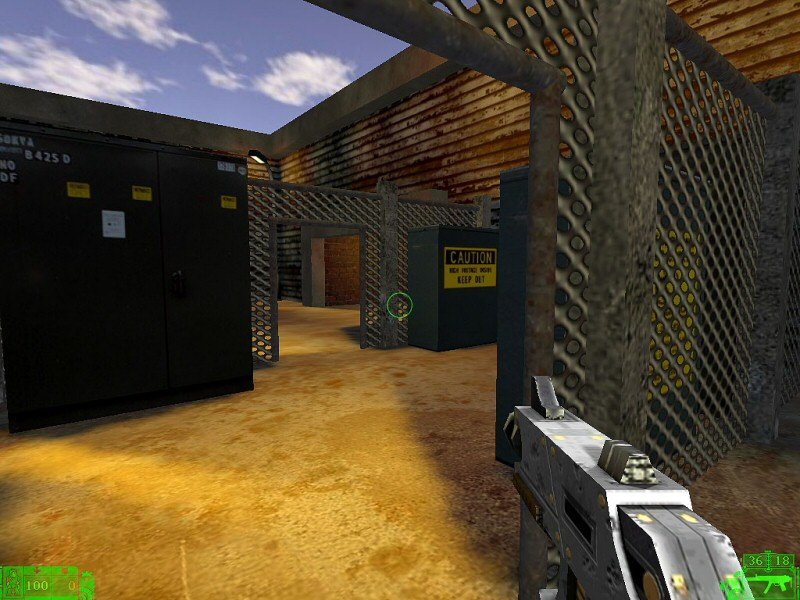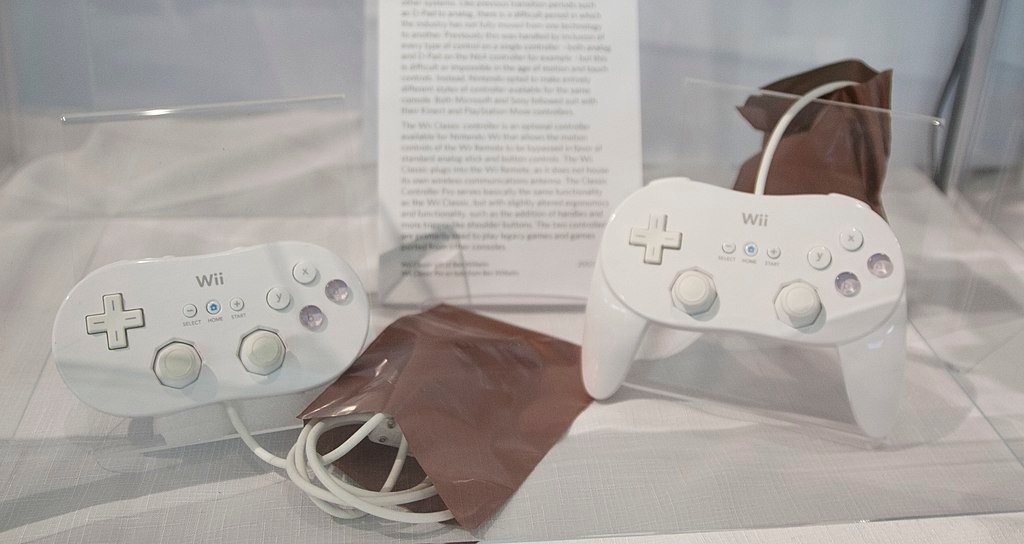The convergence of Game Platforms, Gaming, Computer Games, and Gaming Consoles has carved a profound and captivating narrative in the ever-evolving realm of entertainment and technology. This synergy has not only reshaped how we engage with digital entertainment but has also redefined the very essence of interactive leisure.
The concept of computer games, dating back to the early days of mainframe computers in the 1950s, has morphed into an industry that now spans the globe, captivating audiences of all ages and backgrounds. As technology progressed, so did the sophistication of these games, giving rise to many platforms and consoles that have left an indelible mark on the digital landscape.
Gaming Consoles, such as the iconic Atari 2600, the trailblazing Nintendo Entertainment System (NES), and modern powerhouses like the PlayStation and Xbox series, and have brought gaming into our living rooms. These devices introduced us to immersive experiences and fostered a sense of community through multiplayer interactions, reshaping how we connect and compete with friends and strangers.
In parallel, the advent of personal computers transformed our relationship with gaming. Systems like the Commodore 64 and IBM PC paved the way for increasingly complex and visually stunning Computer Games, pushing the boundaries of what was thought possible in the digital realm.
Today, Game Platforms have expanded to encompass mobile gaming, virtual reality experiences, and cloud-based gaming services, reflecting the ever-growing appetite for diverse and accessible forms of entertainment. The intersection of these keywords—Game Platforms, Gaming, Computer Games, and Gaming Consoles—is where innovation thrives and the future of interactive entertainment unfolds. In this exploration, we delve into the rich history, the present landscape, and the exciting prospects of this dynamic world.
Table of Contents
What was the first gaming platform?
The concept of the “first gaming platform” can be somewhat ambiguous due to the gradual development of gaming technology. However, if we’re talking about the earliest electronic gaming platform that resembled what we consider a gaming system today, it would be the Magnavox Odyssey, released in 1972. Developed by Ralph Baer, the Magnavox Odyssey is often regarded as the first home video game console.

The Odyssey included games like Pong, Tennis, and Hockey, which were played using an overlay screen and plastic overlays to create different game scenarios. Players connected it to their television sets, making it one of the earliest attempts to bring interactive electronic entertainment into people’s homes.
While the Odyssey’s graphics were elementary and lacked features that modern gaming platforms offer, it laid the foundation for the gaming industry by introducing the concept of dedicated gaming hardware for home use. It marked a significant milestone in the history of gaming platforms, setting the stage for developing subsequent consoles and gaming experiences.
When did computer gaming start?
Computer gaming began in the early 1950s with the development of rudimentary games on mainframe computers. One of the earliest notable games was “Spacewar!” created in 1962 by Steve Russell and his colleagues at MIT. It ran on the PDP-1, a large mainframe computer. “Spacewar!” was a two-player space combat game featuring simple vector graphics and thruster physics.
However, it’s essential to distinguish between computer gaming and video gaming, as the latter typically involves using specialized hardware or dedicated gaming consoles. The era of video gaming began in the early 1970s with the release of arcade games like “Pong” in 1972. This marked the start of the video game industry’s rapid growth, leading to the development of home consoles and personal computer games in the following decades.
So, while computer gaming had its roots in the 1950s, the video game industry, as we know it today, took off in the early 1970s with the emergence of arcade games.
Evolution of Gaming Platforms
The history of computer game platforms is a fascinating journey that spans several decades. Here’s a brief overview of the evolution of computer game platforms:

Mainframe Computers (1950s-1960s)
The origins of computer gaming trace back to the 1950s and 1960s when the first rudimentary computer games emerged on mainframe computers. These early games were far from today’s visually stunning and immersive experiences. They were text-based and had extremely limited graphical capabilities, primarily due to the severe constraints of the computing hardware of the time.
“Spacewar!” is prominent in history among these early computer games. Developed in 1962 by Steve Russell and his colleagues at the Massachusetts Institute of Technology (MIT), “Spacewar!” is often regarded as one of the pioneering video games. It ran on a PDP-1 mainframe computer, featuring two spacecraft engaged in a gravity-based battle in the backdrop of a starfield.
These humble beginnings laid the foundation for the video game industry’s evolution, paving the way for increasingly sophisticated games with advanced graphics, interactivity, and gameplay in the decades to come.
Arcade Games (1970s)
The 1970s witnessed a significant milestone in gaming history with the emergence of arcade games, notably “Pong” in 1972 and “Space Invaders” in 1978. “Pong,” designed by Atari co-founder Nolan Bushnell, was one of the earliest arcade games that simulated table tennis. It introduced simple 2D graphics and a basic multiplayer interface, allowing players to engage in a virtual game of ping-pong. The game’s success marked the advent of the commercial video game industry.
Following “Pong,” “Space Invaders” revolutionized arcade gaming by introducing dynamic and interactive gameplay. It featured a relentless alien invasion that players had to fend off, incorporating a scoring system to encourage competition among players. These arcade games demonstrated the potential for interactive entertainment. They paved the way for further advancements in graphics, gameplay, and multiplayer experiences, setting the stage for today’s modern gaming landscape. The popularity of these games also played a vital role in promoting the concept of gaming as a social activity.
Home Consoles (1970s-1980s)
The release of the Magnavox Odyssey in 1972 indeed marked a significant milestone in the history of gaming, heralding the birth of the home video game console. However, the late 1970s and early 1980s indeed saw the meteoric rise of the gaming industry within households. The Atari 2600, introduced in 1977, was pivotal in bringing video games into millions of homes. Its success was followed by the launch of the Intellivision in 1979, offering more advanced graphics and gameplay.
Nonetheless, the real game-changer came with the Nintendo Entertainment System (NES) release 1983. The NES revitalized the struggling video game industry, which had suffered due to the market crash in 1983, and established the model for future consoles. Its success paved the way for a golden era of gaming in the late 1980s, setting the stage for the expansive and diverse gaming landscape we know today. These consoles of the 1970s and 1980s laid the foundations, shaping gaming into a mainstream form of entertainment within households.
Personal Computers (1980s-1990s)
During the 1980s and 1990s, personal computers like the Commodore 64, Apple II, and IBM PC played a pivotal role in shaping the gaming industry. These platforms became accessible to a broader audience, fostering innovation and creativity in game development.
The Commodore 64, known for its affordability and robust hardware, offered a vast library of games. The Apple II, with its open architecture and programming capabilities, the Apple II inspired early game developers and introduced educational gaming. Meanwhile, the IBM PC and its clones became famous for business and gaming.
In the early 1990s, games like “Doom” revolutionized the industry by pioneering 3D graphics and fast-paced first-person shooter gameplay. Simultaneously, titles like “Myst” pushed the boundaries of storytelling and puzzle-solving, demonstrating the potential for immersive narrative-driven experiences.
These personal computers laid the groundwork for modern gaming, emphasizing graphics, gameplay, and storytelling, setting the stage for the diverse and innovative gaming landscape we enjoy today.
Handheld Consoles (1980s-present)

Nintendo’s Game Boy, introduced in 1989, indeed revolutionized the gaming industry by popularizing portable gaming consoles. Its success laid the foundation for a new era of gaming on the go. The Game Boy’s portability, affordable pricing, and an impressive lineup of games like “Tetris” made it a cultural phenomenon. Subsequently, Nintendo continued to innovate with the Game Boy Color, Game Boy Advance, and the dual-screened Nintendo DS, integrating touch controls and fostering a diverse game library.
Following Nintendo’s lead, Sony entered the handheld market with the PlayStation Portable (PSP) in 2004, offering powerful graphics and multimedia capabilities. The PSP garnered a significant following and showcased the demand for high-quality portable gaming experiences. This trend of handheld consoles has endured, with subsequent iterations like the Nintendo 3DS and Nintendo Switch, demonstrating the lasting appeal and market viability of portable gaming devices, influencing how gamers access and enjoy their favorite titles.
CD-ROM and DVD-Based Consoles (1990s-2000s)
Consoles like the Sony PlayStation (1994), Sega Saturn (1994), and Sony PlayStation 2 (2000) played a pivotal role in revolutionizing the gaming industry by popularizing the use of CD-ROMs and later DVDs as storage mediums. This shift from cartridges to optical discs brought about significant advancements in gaming.
CD-ROMs and DVDs offered substantial storage capacity compared to cartridges, allowing game developers to create more expansive and detailed worlds. Gamers enjoyed richer, cinematic experiences with improved audio and full-motion video sequences. The increased storage also facilitated the use of 3D graphics and complex gameplay mechanics that were previously constrained by cartridge limitations.
Furthermore, these consoles contributed to the growth of multimedia entertainment, as they could double as CD/DVD players, expanding their appeal beyond gaming. This convergence of gaming and multimedia laid the foundation for the multifunctional entertainment systems we see in modern consoles, enhancing the overall gaming experience and setting the stage for future technological advancements in the industry.
Online Gaming (2000s-present)
The 2000s were a transformative period for the gaming industry, marked by the widespread adoption of online gaming platforms and services. Xbox Live, introduced in 2002 by Microsoft for the Xbox console, revolutionized console gaming by providing a cohesive online ecosystem. Gamers could now play multiplayer games, chat with friends, and download content seamlessly over the internet.

In 2006, Sony launched the PlayStation Network (PSN), offering similar features for PlayStation users. This move intensified competition and drove innovation in the online gaming space.
Meanwhile, on the PC gaming front, Steam, launched in 2003 by Valve Corporation, emerged as a dominant force. It introduced digital distribution and made it convenient for gamers to purchase, download, and update games. Steam’s extensive library, frequent sales, and community features made it a cornerstone of PC gaming.
These online platforms not only facilitated multiplayer gaming but also opened doors for digital distribution, downloadable content, and indie game development, shaping the modern gaming landscape we know today.
Mobile Gaming (2000s-present)
The late 2000s marked a transformative era in the gaming industry with the introduction of smartphones. The launch of the Apple App Store in 2008 and shortly thereafter, the Google Play Store, revolutionized the way people engaged with and consumed video games. These digital marketplaces offered a vast array of mobile games, ranging from simple puzzles to immersive 3D adventures, and everything in between.
What made smartphones so pivotal was their ubiquity; suddenly, millions of people had portable gaming devices in their pockets. Games became more accessible to a broader audience, transcending age and gaming experience. The touchscreens and accelerometers opened up new possibilities for game design, making use of intuitive gestures and movements. Moreover, the freemium model, where games were free to download but offered in-app purchases, allowed game developers to monetize their creations effectively.
This mobile gaming boom attracted casual gamers and led to the emergence of competitive mobile esports and a thriving indie game scene, further solidifying smartphones as a dominant gaming platform in the 21st century.
Virtual Reality (VR) (2010s-present)
The advent of VR platforms, exemplified by the Oculus Rift and HTC Vive in 2016, marked a significant leap forward in the realm of immersive gaming. These cutting-edge technologies transported players from their living rooms to entirely new digital worlds, redefining the gaming experience.
VR headsets like the Oculus Rift and HTC Vive offered an unprecedented level of immersion. By tracking the player’s head and hand movements, they allowed for natural and intuitive interactions within virtual environments. This added an entirely new dimension to gameplay, enabling players to physically duck behind cover, reach out to grab objects, or even engage in sword fights, all in a remarkably realistic manner.
The immersive nature of VR also heightened emotional engagement. Horror games, for instance, became genuinely terrifying experiences, as players felt a real sense of presence within the frightening scenarios. Furthermore, VR opened doors to educational and therapeutic applications, harnessing its potential beyond gaming.
As technology continues to advance, VR remains a frontier for innovation in gaming, promising even more astonishing experiences in the future.
Cloud Gaming (2010s-present)
Cloud gaming services like Google Stadia and Microsoft’s Xbox Cloud Gaming (formerly known as Project xCloud) have ushered in a new era in the gaming world by leveraging the power of the internet. These platforms allow gamers to stream and play graphically intensive and resource-demanding video games on various devices, including smartphones, tablets, and low-end computers, without expensive gaming hardware.

The key innovation behind cloud gaming is offloading processing and rendering tasks to remote data centers with powerful hardware. Game data is processed on these remote servers, and the video and audio output is streamed to the player’s device in real-time. Player inputs are transmitted to the server, creating a seamless and responsive gaming experience.
This technology reduces the cost of entry for gamers and eliminates the need for constant hardware upgrades to play the latest titles at high settings. It has the potential to democratize gaming, making it more accessible to a broader audience and bridging the gap between casual and hardcore gamers. However, challenges such as latency and internet bandwidth remain, which the industry is continually working to address as cloud gaming continues to evolve.
Next-Generation Consoles (2010s-present)
Sony’s PlayStation 5 and Microsoft’s Xbox Series X/S represent the latest advancements in the console gaming industry, highlighting a commitment to pushing the boundaries of gaming technology. These new generations of consoles offer several significant improvements.
Graphics have taken a giant leap forward with ray tracing capabilities and 4K resolution, delivering stunning visual fidelity. The integration of SSDs vastly reduces loading times, ensuring a seamless gaming experience. Both consoles prioritize backward compatibility, allowing players to enjoy their existing game libraries. Additionally, they introduce advanced features such as haptic feedback controllers (like the DualSense for PS5) for immersive gameplay and faster refresh rates for smoother graphics.
The PS5 and Xbox Series X/S also emphasize connectivity and online experiences, with robust online multiplayer services and access to extensive digital game libraries. Furthermore, these consoles support emerging gaming trends like cloud gaming, enabling players to stream games and access content instantly.
The PlayStation 5 and Xbox Series X/S represent a significant leap in console gaming, combining cutting-edge hardware with innovative features to provide gamers with a more immersive and enjoyable gaming experience.
Blockchain and NFT Gaming (Emerging)
In recent years, integrating blockchain technology and non-fungible tokens (NFTs) into gaming has sparked a significant paradigm shift in the industry. Blockchain technology, known for its security and transparency, has been leveraged to authenticate and track in-game assets, making ownership and trading of these digital items secure and verifiable.
NFTs, unique digital tokens representing ownership of specific assets or items, have gained prominence within the gaming ecosystem. Players can now genuinely own their in-game purchases, whether it’s rare skins, weapons, or virtual real estate, thanks to NFTs. This ownership is stored on a blockchain, making it tamper-proof and ensuring players have a genuine claim to their virtual possessions.
Furthermore, NFTs have introduced new revenue streams for game developers and creators, allowing them to sell unique in-game items directly to players. This decentralized approach challenges traditional gaming economies, where centralized companies often control and profit from the virtual goods market.
As this trend continues to evolve, blockchain and NFT integration is poised to reshape the gaming landscape, fostering player empowerment in digital economies and promoting actual ownership within virtual worlds.
The history of computer game platforms is a dynamic tapestry, mirroring the relentless evolution of technology and the shifting contours of the gaming industry. Each era has ushered in groundbreaking innovations and unique gaming experiences that have captivated players globally.
From the text-based games of mainframe computers in the 1950s to the immersive virtual worlds of today’s virtual reality and cloud gaming, the journey has been a relentless quest for more advanced graphics, faster processors, and novel gameplay mechanics. This progression underscores the industry’s commitment to delivering ever-more captivating and interactive adventures, demonstrating that gaming remains at the forefront of technological innovation.










